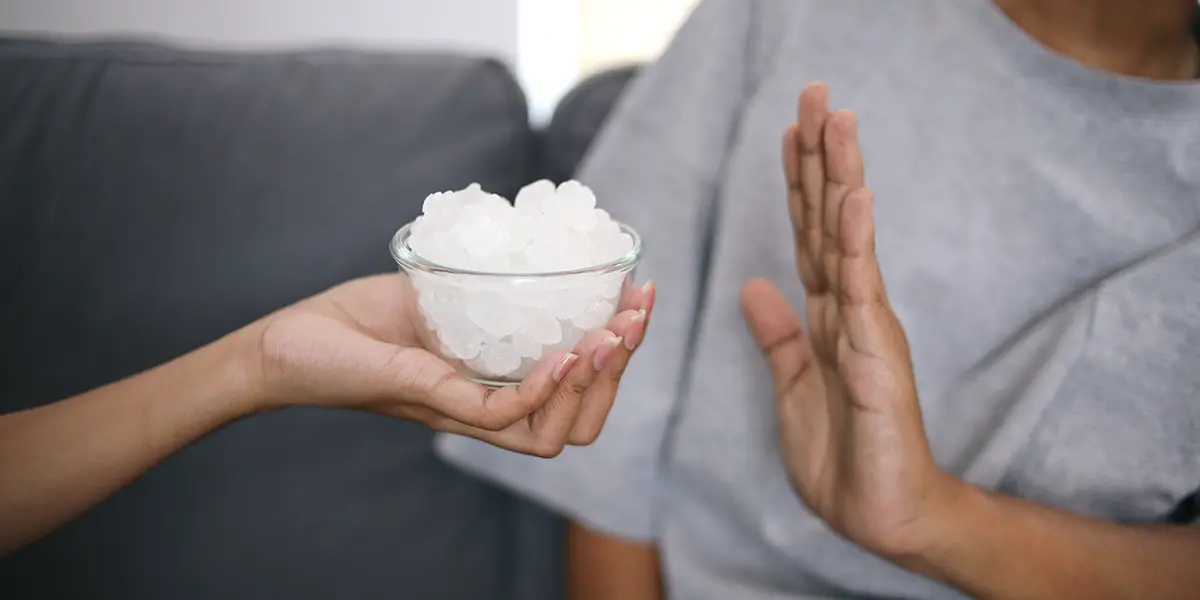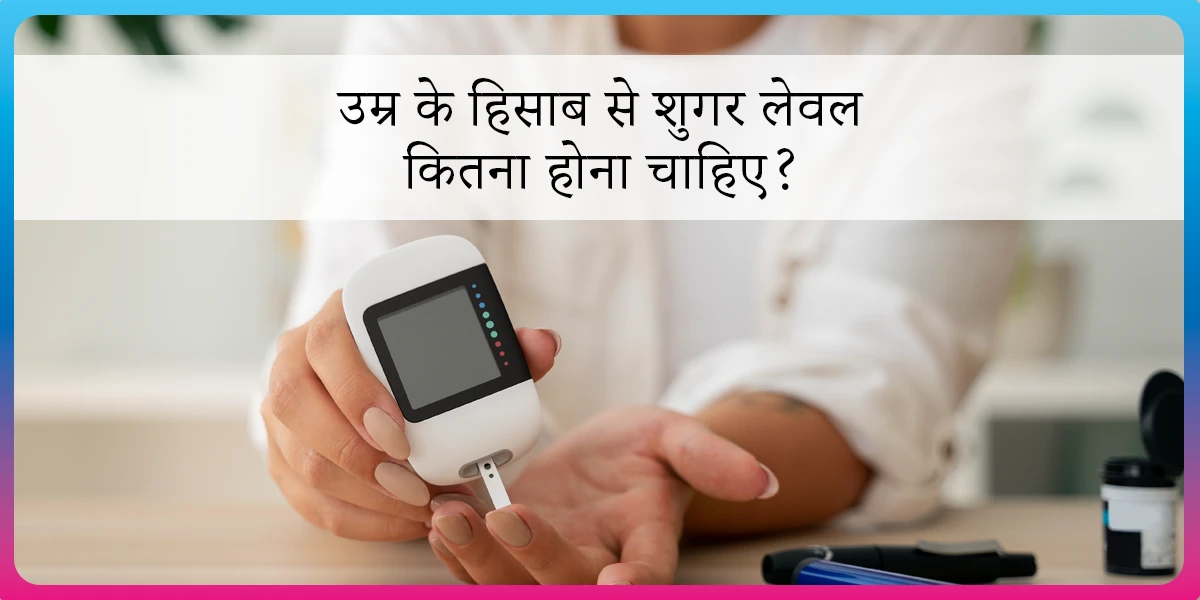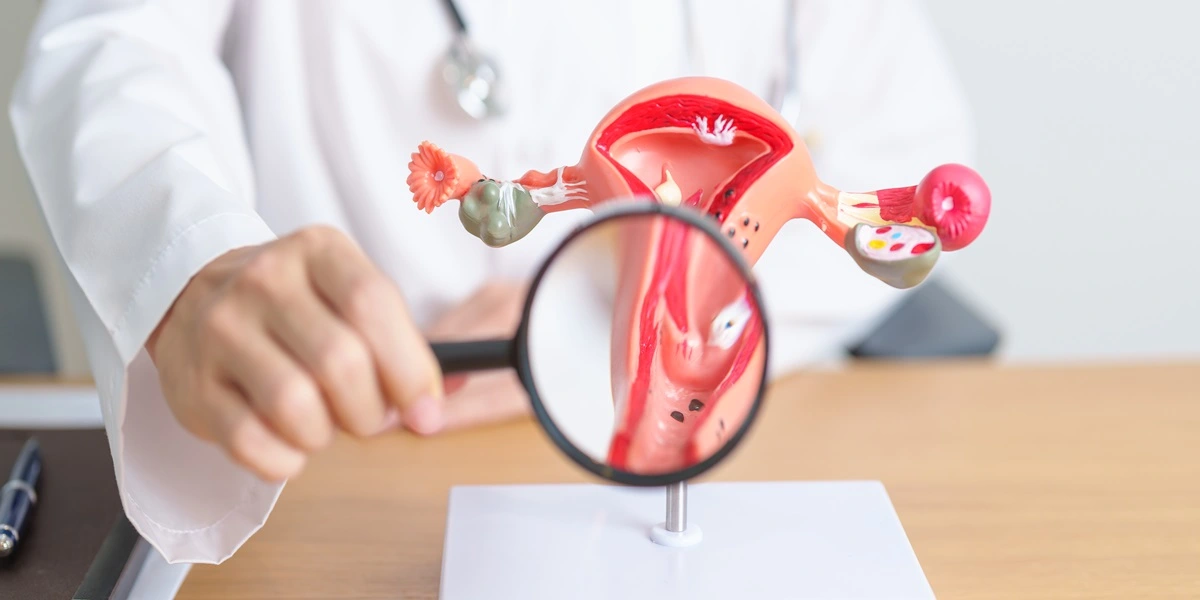No Sugar Diet Plan: 14-Days to a Healthier You

Shambhavi’s day always started with chai and bun maska, bread jam, or biscuits before rushing to catch her train. At work, she’d grab a sugary coffee and, then, around 11 a.m., munch on mithai chips or some namkeen or farsaan brought in by her colleagues.
Lunch was usually from the canteen – roti or rice with heavy gravy sabzi. By evening, she somehow felt drained and would crave something ‘sweet’ again.
It all seemed normal until she noticed her energy crashes were too frequent, and she had no energy after reaching home. Her favourite outfits didn’t fit anymore!
That’s when Shambhavi decided to try a no-sugar diet.
What is a No-sugar Diet?
So, a no-sugar diet is not about giving up everything sweet. It’s actually about smartly cutting out the ‘invisible’ sugars hiding in your chai, snacks, canteen meals, hotel food and packaged foods. This diet focuses on wholesome meals that keep you full and energised.
At first, Shambhavi struggled, but with small changes, she realised how much better she felt without sugar spikes and crashes.
Curious to know how this diet works? Let’s begin!
What do You Avoid?
- Sugary Beverages: Skip sugar-loaded tea, coffee, soft drinks, and packaged fruit juices.
- Desserts and Sweets: Cut out gulab jamun, rasgulla, barfi, and other sugary indulgences.
- Packaged Foods: Biscuits, bread with hidden sugar, ketchup, and processed snacks.
- Hidden Sugars in Meals: Avoid ready-made chutneys, pickles, and store-bought spice mixes with added sugar.
- Artificial Sweeteners (Optional): If cravings persist, it’s best to limit sugar substitutes too.
What You Focus On?
- Freshly Cooked Meals: Stick to dal, sabzi, roti, or rice cooked at home without packaged masalas or sugary sauces.
- Wholesome Snacks: Enjoy roasted peanuts, boiled chana, or a small bowl of sprouts for munching.
- Natural Beverages: Opt for plain water, lemon water without sugar, buttermilk, or unsweetened herbal teas.
- Fruit as a Treat: When craving something sweet, have fresh fruit like papaya, guava, or a few dates sparingly.
- Spices and Herbs: Use ginger, cinnamon, or cardamom to enhance flavours naturally instead of relying on sugar.
What Are the Benefits of a No-sugar Diet Plan?
Reducing sugar in your diet can lead to noticeable improvements in your health. Here’s how:
- Helps with Weight Loss: Eating less sugar means fewer empty calories, reducing the chances of overeating. It also helps control cravings, making it easier to manage your weight naturally.
- Better Control of Diabetes: Cutting sugar helps stabilise blood sugar levels. This is especially helpful for managing diabetes or lowering the risk of developing it. It also reduces insulin spikes, which can improve overall blood sugar control.
- Supports Heart Health: High sugar intake is linked to higher blood pressure, bad cholesterol (LDL), and inflammation – all of which strain the heart. Reducing sugar lowers these risks, keeping your heart healthier.
And there are more benefits:
- Clearer Skin: High sugar can worsen acne and inflammation. Reducing sugar often leads to smoother, healthier skin.
- Improved Digestion: Eating less processed food and sugar helps reduce bloating and supports better gut health.
- Steady Energy Levels: Without sugar highs and crashes, your energy remains stable throughout the day.
- Reduces Sugar Cravings: Over time, eating less sugar rewires your taste buds, making you less likely to crave sweets.
To know your chances of Diabetes reversal, take the Diabetes Reversal TestDiabetes Reversal
Calculator
Why It Matters?
Reducing sugar isn’t about giving up what you love; it’s about gaining a healthier body, steady energy, and a lifestyle that protects your long-term health. It’s a simple step with big rewards – worth trying, right?
14-Day Sample No-sugar Diet Plan
The no-sugar diet focuses on wholesome, natural meals to help you feel energized and stay on track with your health goals. Our nutrition coaches carefully design each day’s plan to eliminate added sugars while ensuring you enjoy a variety of flavours and nutrients. Here is the plan that you can follow:
Day 1 Meal Plan
| Time | Meal | |
| Early morning | 6:00 AM | 1 glass of jeera water |
| Breakfast | 8:00 AM | 1 medium bowl sprouts + 1 cup tea without sugar |
| Mid-morning | 11:00 AM | 3 almonds + 2 walnuts |
| Lunch | 2:00 PM | 1 medium bowl salad + 2 roti without oil + 1 medium bowl bhindi sabji + 1 medium bowl curd without sugar |
| Evening | 5:00 PM | 1 apple + 1 tbsp mixed seeds |
| Dinner | 8:00 PM | 1 medium bowl salad + 1 medium bowl dal khichdi + 1 glass buttermilk |
Day 2 Meal Plan
| Time | Meal | |
| Early morning | 6:00 AM | 1 glass of ajwain water |
| Breakfast | 8:00 AM | 1 medium mix-vegetable dalia upma + 2 egg whites/1 medium bowl curd + 1 cup tea without sugar |
| Mid-morning | 11:00 AM | 3 almonds + 2 walnuts |
| Lunch | 2:00 PM | 1 medium bowl salad + 2 roti without oil + 1 medium bowl karela sabji + 1 medium bowl toor dal |
| Evening | 5:00 PM | 1 orange + 1 tbsp mixed seeds |
| Dinner | 8:00 PM | One medium bowl of salad + Two small size chicken/Paneer frankies (made with atta) + A medium bowl of mixed vegetable clear soup |
Day 3 Meal Plan
| Time | Meal | |
| Early morning | 6:00 AM | 1 glass of methi water |
| Breakfast | 8:00 AM | 1 medium bowl of oats porridge in skim milk + 1 cup of tea without sugar |
| Mid-morning | 11:00 AM | 3 almonds + 2 walnuts |
| Lunch | 2:00 PM | 1 medium bowl salad + 1.5 medium jowar bhakri + 1 medium chicken gravy/ paneer gravy |
| Evening | 5:00 PM | 1 pear + 1 tbsp mixed seeds |
| Dinner | 8:00 PM | 1 medium bowl salad + 2 roti without oil + 1 medium bowl turai/toru (or any green vegetable) sabji + 1 medium bowl dal |
Day 4 Meal Plan
| Time | Meal | |
| Early morning | 6:00 AM | 1 glass of cinnamon water |
| Breakfast | 8:00 AM | 2 small vegetable besan cheela + green chutney + 1 cup tea without sugar |
| Mid-morning | 11:00 AM | 3 almonds + 2 walnuts |
| Lunch | 2:00 PM | 1 medium bowl salad + 1 medium bowl brown rice + 1 medium bowl rajma curry |
| Evening | 5:00 PM | 1 small bowl papaya + 1 tbsp mixed seeds |
| Dinner | 8:00 PM | 1 medium bowl salad + 2 small mixed vegetable whole wheat paratha (without potato) with less oil + 1 medium bowl curd without sugar |
Day 5 Meal Plan
| Time | Meal | |
| Early morning | 6:00 AM | 1 glass of lemon water |
| Breakfast | 8:00 AM | 1 medium paneer whole wheat paratha + 1 medium bowl curd + 1 cup tea without sugar |
| Mid-morning | 11:00 AM | 3 almonds + 2 walnuts |
| Lunch | 2:00 PM | 1 medium bowl salad + 2 bajra phulka without oil + 1 medium bowl palak sabji + 1 medium bowl masoor dal |
| Evening | 5:00 PM | 1 pomegranate + 1 tbsp mixed seeds |
| Dinner | 8:00 PM | 1 medium bowl salad + 2 roti without oil + 1 medium bowl fish curry/soybean curry |
Day 6 Meal Plan
| Time | Meal | |
| Early morning | 6:00 AM | 1 glass of coriander water |
| Breakfast | 8:00 AM | 2 Idlis + 1 medium bowl vegetable sambhar + 1 cup tea without sugar |
| Mid-morning | 11:00 AM | 3 almonds + 2 walnuts |
| Lunch | 2:00 PM | 1 medium bowl salad + 1 medium bowl dalia dal khichdi + 1 medium bowl curd without sugar |
| Evening | 5:00 PM | 1 guava + 1 tbsp mixed seeds |
| Dinner | 8:00 PM | 1 medium bowl salad + 1 medium bowl brown rice + 1 medium bowl masoor dal + 1 medium bowl mixed vegetable sabji |
Day 7 Meal Plan
| Time | Meal | |
| Early morning | 6:00 AM | 1 glass of cinnamon water |
| Breakfast | 8:00 AM | 2 vegetable besan cheela + 2 tbsp mint chutney + 1 cup tea without sugar |
| Mid-morning | 11:00 AM | 3 almonds + 2 walnuts |
| Lunch | 2:00 PM | 1 medium bowl salad + 1 medium bowl paneer/egg pulao + 1 medium bowl curd |
| Evening | 5:00 PM | 1 small bowl of pineapple chunks + 1 tbsp mixed seeds |
| Dinner | 8:00 PM | 1 medium bowl salad + 2 rotis without oil + 1 medium bowl egg bhurji/paneer bhurji |
| You can follow this for the next seven days for a comprehensive 14-day diet plan! |
5 Simple Tips for Success on the 14-Day No-Sugar Diet
Shilpa Joshi, VP of Metabolic Health at Fitterfly, recommends these easy tips to help you stay on track:
1. Focus on Whole Foods
Stick to fresh meals like plain dal with roti, rice with sabzi, or curd with a bowl of sprouts. These keep you full and provide energy without sugar spikes. For snacks, choose roasted peanuts, boiled chickpeas, or plain makhana.
2. Read Labels Carefully
Be cautious with everyday items like ketchup, achar, packaged chutneys, or even breakfast cereals. These often contain hidden sugars. Opt for homemade chutneys, plain yoghurt, homemade dahi, or fresh spice blends instead.
3. Plan Meals and Snacks
Prepare ahead by keeping sugar-free snacks ready, such as a bowl of murmura, roasted makhana, boiled eggs, or almonds. Meal prepping ensures you avoid reaching for sugary treats like biscuits or sweetened beverages when hungry.
4. Hydrate Wisely
Replace sugary chai, coffee, lassi, juice or soft drinks with unsweetened chai, plain lemon water, buttermilk, or coconut water (without added sugar). Staying hydrated helps reduce sugar cravings naturally.
5. Experiment with Spices
Use natural flavour enhancers like cinnamon, cardamom, fennel seeds, or nutmeg. For example, add cinnamon to milk or cardamom to chai for a touch of sweetness without sugar.
What are the Potential Challenges, and How to Overcome Them?
Going on a no-sugar diet can feel tricky at times, but don’t worry! Here’s how to handle common problems and stick to your goals:
1. Cravings for Sweets
Why it Happens: Your body is adjusting to less sugar.
Solution: Satisfy cravings with a small portion of naturally sweet foods like guava, papaya, or a handful of raisins. Herbal teas with cinnamon or chewing fennel seeds after meals can also help.
2. Social Situations
Why It’s Hard: Gatherings or festivals often feature sugary items like kheer, laddoo, or sweetened drinks.
Solution: Opt for dishes like poha without sugar, plain curd, or simple roti-sabzi combinations. At events, choose fresh salads, soups, or curries and politely skip the desserts.
3. Hidden Sugars in Everyday Foods
Why It’s Tricky: Processed foods like ketchup, ready-made masala mixes, and even some snacks often have added sugar.
Solution: Stick to homemade spice blends, fresh mint chutney, or plain roasted snacks like peanuts or murmura. Always check ingredient labels for syrups or “-ose” ingredients like fructose or maltose.
Reduced HbA1c by HALF in 6 months


6.6%
Happy members
EMI
Guarantee
4.8/5
Diabetes Prime Program
Here are some more tips for you
- Make Gradual Changes: Instead of cutting out sugar completely on day one, start by reducing sugar in tea, coffee, and desserts like halwa or kheer.
- Celebrate Small Wins: Each day, you avoid sugary foods and acknowledge your success – it helps keep you motivated.
- Mindful Eating: Focus on savouring the natural flavours of fresh foods like roti, sabzi, or curd instead of missing the sweetness.
- Involve Family: Preparing no-sugar meals for the whole family can make it easier to stick to the plan.
How We At Fitterfly Can Help You?
At Fitterfly, we understand that adopting a no-sugar diet can feel overwhelming. That’s why we provide personalized support through our Nutrition, Fitness, and Success Coaches.
Our Nutrition Coaches create personalized meal plans tailored to your preferences, helping you make smarter food choices, spot hidden sugars, and enjoy practical, wholesome alternatives that align with your health goals.
Complementing this, our Fitness Coaches design exercise routines to boost calorie burn, improve insulin sensitivity, and maintain steady energy levels throughout the day. To keep you motivated, our Success Coaches provide support to overcome cravings, social pressures, and emotional eating, guiding you in building sustainable habits for lasting progress and a healthier lifestyle.
Together, this holistic approach ensures you experience the full benefits of a no-sugar diet – like better blood sugar control, sustainable weight loss, and a healthier, more energetic you. With Fitterfly, it’s not just about cutting out sugar; it’s about creating a balanced, sustainable routine for your overall well-being.
Give us a missed call at 08068507599 to know more about how we can help you to manage your weight.
This blog provides general information for educational and informational purposes only and shouldn't be seen as professional advice.
Frequently Asked Questions
What does 14 days without sugar do?
By 14 days, your taste buds adjust to natural flavours, and you crave less sugar. You may also see better digestion, improved energy, and noticeable changes in weight or waistline.
What happens after 7 days without sugar?
After 7 days without sugar, your energy levels start to stabilize as you avoid sugar highs and crashes. Cravings for sugary foods may begin to reduce, and you might notice less bloating and clearer skin.
What foods should you eat on a no-sugar diet?
Focus on fresh vegetables, whole grains like brown rice, legumes, lentils, nuts, seeds, lean proteins, and natural spices. For snacks, choose roasted chickpeas, boiled eggs, or fresh fruits in moderation.
How do you plan a no-sugar diet?
Start by cutting obvious sources of sugar like sweets and sugary drinks. Replace them with whole foods and homemade meals. Plan your meals and snacks ahead to avoid processed foods, and read labels to steer clear of hidden sugars.
Can I eat rice in a no-sugar diet?
Yes, you can eat plain brown rice in a no-sugar diet, preferably brown or unpolished rice, as it has more fiber and nutrients. Avoid flavoured or packaged rice dishes that may contain added sugars.
Can I eat fruits in a no-sugar diet?
Yes, you can eat fruits in moderation, especially low-sugar fruits like guava, berries, and papaya. Avoid fruit juices or dried fruits with added sugar.
What is a good no-sugar breakfast?
A good no-sugar breakfast includes options like plain oats with nuts, sprouts, eggs with whole-grain toast, or curd with fresh fruits.
What are free sugar-rich foods?
Free sugar-rich foods include packaged sweets, candies, sugary drinks, flavoured yoghurts, biscuits, jams, and bakery items like cakes and pastries.
How long does it take to see results from no sugar?
Most people see noticeable results, such as better energy and reduced bloating, within 7 to 14 days. Weight loss and other long-term benefits, like improved blood sugar levels, may take a few weeks.
How many days to detox from sugar?
It typically takes 7 to 10 days to detox from sugar. During this time, cravings may peak, but they gradually fade as your body adjusts to a low-sugar diet.
What happens if you completely skip sugar?
Completely skipping sugar helps regulate blood sugar levels, improves energy, and reduces inflammation. Over time, it lowers the risk of chronic illnesses like diabetes, obesity, and heart disease. You also develop a better appreciation for natural flavours.




















